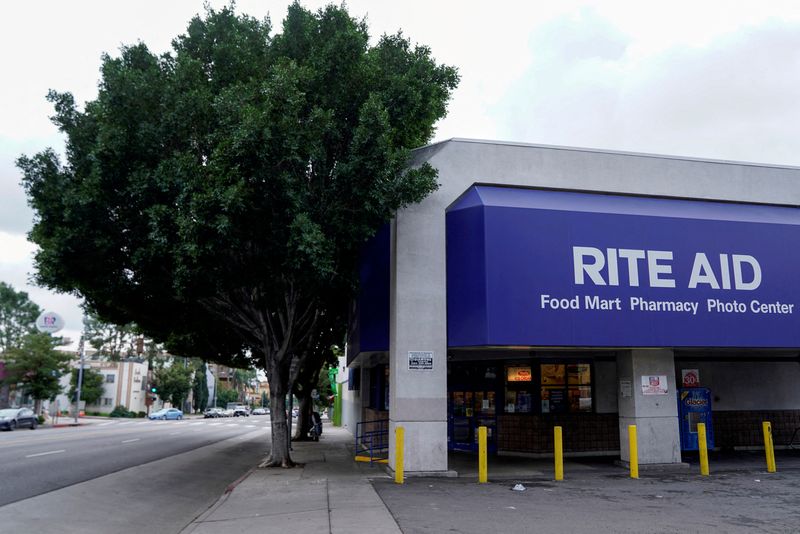By Dietrich Knauth
NEW YORK (Reuters) – A U.S. bankruptcy judge on Friday approved Rite Aid’s (NYSE:) restructuring plan, allowing the pharmacy chain to reduce its debt by $2 billion and hand control to a group of lenders.
U.S. Bankruptcy Judge Michael Kaplan approved Rite Aid’s bankruptcy plan at a hearing in Trenton, New Jersey, saying the restructuring had saved the company from closing and liquidating its operations.
Before Kaplan’s ruling, Rite Aid attorney Aparna Yenamandra told the judge that 28,000 jobs could be lost if the restructuring deal was not approved.
“If we can’t get it done now, we’ll just never get it done,” Yenamandra said.
Rite Aid filed for Chapter 11 in October 2023 after reporting $750 million in losses and $24 billion in revenues in the last fiscal year.
Rite Aid used its bankruptcy to close hundreds of stores, sell its Elixir pharmacy business and negotiate settlements with its lenders, drug distribution partner McKesson (NYSE:) and other creditors.
Rite Aid’s restructuring will provide $47.5 million for junior creditors, including individuals and local governments who have sued the company for contributing to the deadly opioid epidemic in the US. Before filing for bankruptcy, Rite Aid faced 1,600 opioid lawsuits, including one by the federal government alleging the company ignored red flags when writing suspect prescriptions for addictive opioid painkillers.
Arik Preis, an attorney representing opioid creditors, said 22,000 individuals who filed opioid personal injury claims in Rite Aid’s bankruptcy would receive between $250 and $500 each. The settlement payments, while modest, are a victory for opioid plaintiffs because of Rite Aid’s high debt and severe financial problems, Preis said.
“It’s pretty terrible, but it could have been worse,” Preis said. “That’s the reality of this case.”
Rite Aid has reached settlements with 16 of the 17 states where it operates, resolving those states’ opioid claims. Kaplan rejected an objection from Maryland, saying the state could not stop Rite Aid from going bankrupt so it could pursue an investigation into Rite Aid’s opioid sales.
Rite Aid, which had more than 2,000 stores when it filed for bankruptcy in October, will emerge from bankruptcy with about 1,300 locations remaining.
The company plans to emerge from bankruptcy in about a month, funded by $2.55 billion in financing from its lenders, Yenamandra said.

Rite Aid will use the time to refine some details in its bankruptcy agreement, including a last-minute change spurred by Thursday’s U.S. Supreme Court ruling in the bankruptcy of Purdue Pharma, which will sharply strengthen bankruptcy courts’ ability to block lawsuits was scaled back. people and organizations that have not filed for bankruptcy.
To comply with that ruling, Rite Aid will ensure that the legal protection of its own deal for non-debtors, such as the lenders and Rite Aid’s CEO, obtains the consent of anyone who has a legal claim against those parties.


